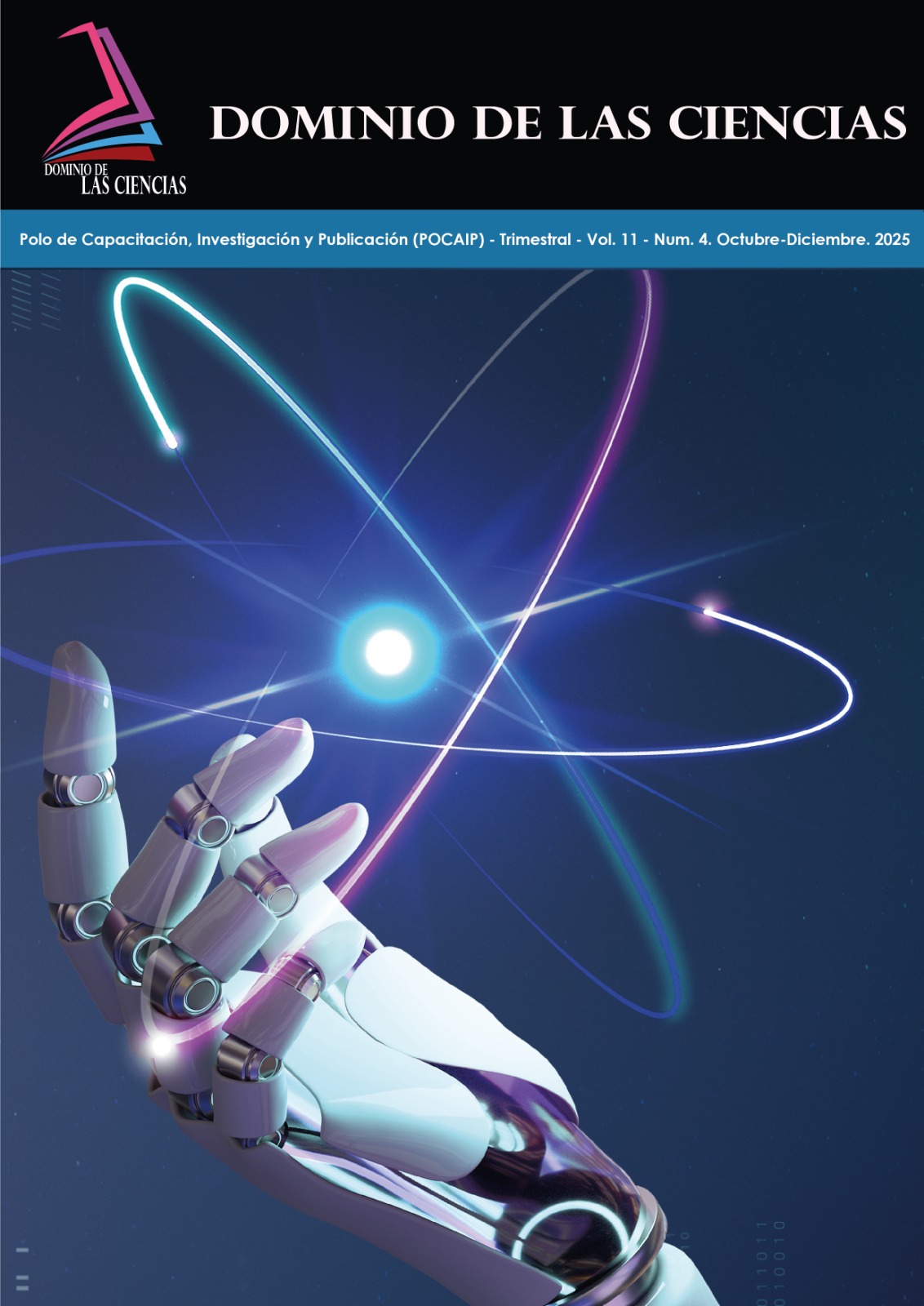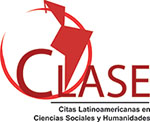Development of innovative teaching strategies to stimulate the learning of the English language
DOI:
https://doi.org/10.23857/dc.v11i4.4557Palabras clave:
teaching strategies, encourage, learning, EnglishResumen
The development of innovative teaching strategies is crucial to enhancing the effectiveness of English language learning in a rapidly evolving educational landscape. These strategies aim to not only improve fluency and comprehension but also empower students with critical thinking and communication skills necessary for global competence. A mixed-approach technique with a descriptive orientation was used to collect data through field research employing instruments that allow for a comprehensive review of the subject from several perspectives. This study analyzes the development of innovative teaching strategies to stimulate the learning of the English language. By integrating technology, such as digital learning platforms, gamification, and virtual reality, alongside traditional and interactive methods like storytelling, task-based learning, and collaborative activities, educators can address diverse learning styles and needs. This approach includes surveys, observation sheets, and interviews. The findings emphasize that innovative approaches not only enhance linguistic competence but also encourage critical thinking, creativity, and global communication skills, making them indispensable in modern English language education. It can be concluded that the development of innovative teaching strategies plays a crucial role in enhancing the learning of the English language, addressing both the challenges and opportunities of modern education. Teachers must constantly change and improve their approaches to guarantee that students are equipped with the skills, motivation, and knowledge required for success in an increasingly globalized and digital world. By including varied and forward-looking approaches, they can create more interesting, inclusive, and effective language learning experiences for students and educators.
Citas
Ampa, Andi & Nurqalbi, Nurqalbi. (2021). Innovative Learning Strategies to Increase Students’ Participation and Quality of English Teaching and Learning Process. Technium Social Sciences Journal. 26. 314-325. 10.47577/tssj.v26i1.5195. https://techniumscience.com/index.php/socialsciences/article/view/5195
Benson, R., & Brack, C. (2010). Online assessment. In R. Benson & C. B. T.-O. L. and A. in H. E. Brack (Eds.), Online Learning and Assessment in Higher Education (pp. 107–153). Chandos Publishing. https://doi.org/https://doi.org/10.1016/B978-1-84334-577-0.50004-3
Bolderston, A. (2012). Conducting a research interview. Journal of Medical Imaging and Radiation Sciences, 43(1), 66-76. https://www.sciencedirect.com/science/article/pii/S1939865411001329
Check J., Schutt R. K. Survey research. In: J. Check, R. K. Schutt., editors. Research methods in education. Thousand Oaks, CA:: Sage Publications; 2012. pp. 159–185. [Google Scholar], https://methods.sagepub.com/book/mono/research-methods-in-education/chpt/survey-research
Crawford, A., Mathews, S. R., Makinster, J., & Saul, E. W. (2005). Teaching and learning strategies for the thinking classroom. London, UK: International Debate Education Association. https://idebate.net/Publications/PDFs/Teaching%20and%20Learning%20Strategies%20for%20the%20Thinking%20Classroom%20-%20Alan%20Crawford%2C%20Samuel%20R.%20Mathews%2C%20Jim%20Makinster%2C%20E.%20Wendy%20Saul.pdf
Doody, O., & Noonan, M. (2013). Preparing and conducting interviews to collect data. Nurse researcher, 20(5). https://pubmed.ncbi.nlm.nih.gov/23687846/
Larsen-Freeman, D., & Anderson, M. (2011). Techniques and principles in language teaching (3rd ed.). London, UK: Oxford University Press. https://elt.oup.com/teachers/tplt/
Orlich, D. C., Harder, R. J., Callahan, R. C., Trevisan, M. S., & Brown, A. H. (2012). Teaching strategies: A guide to effective instruction. Cengage Learning. https://www.cengage.com/c/teaching-strategies-a-guide-to-effective-instruction-11e-orlich-harder-trevisan-brown-miller/9781305960787/
Hidayah, J., & Morganna, R. (2019). Fulfilling the needs of diverse students: teaching strategies for EFL inclusive classrooms. Suar Betang, 14(2), 183-195. https://suarbetang.kemdikbud.go.id/jurnal/index.php/BETANG/article/view/135/110
Kiftiah, S. (2019). Teachers’ strategies in giving explanation in efl classroom (Doctoral dissertation, Universitas Negeri Makassar). https://eprints.unm.ac.id/16083/
Naz, F., & Murad, H. S. (2017). Innovative teaching has a positive impact on the performance of diverse students. SAGE Open, 7(4), 2158244017734022. https://journals.sagepub.com/doi/abs/10.1177/2158244017734022
Pujiati, H., & Tamela, E. (2019, March). English Teaching and Learning Strategies on Genre Based Approach in Indonesian EFL Class: A Case Study. In Seventh International Conference on Languages and Arts (ICLA 2018) (pp. 397-403). Atlantis Press.Seminar Proceeding (pp. 336-342). https://www.atlantis-press.com/proceedings/icla-18/55914527
Richards, J. C., & Rodgers, T. S. (2014). Approaches and methods in language teaching. Cambridge, UK: Cambridge University Press. https://www.cambridge.org/core/books/approaches-and-methods-in-language-teaching/340332E115A61DCBC3408E034FC706FC
Sneddon, James. 2003. The Indonesian Language, Its History and Role in Modern Society. Sydney: NSW Press. https://unsw.press/books/the-indonesian-language
Sumathi, D. (2022). Innovative teaching strategies. Psycho-technological approaches in heutagogy, 25. https://files.eric.ed.gov/fulltext/ED619929.pdf
Subramanian, D. V., & Kelly, P. (2019). Effects of introducing innovative teaching methods in engineering classes: A case study on classes in an Indian university. Computer applications in engineering education, 27(1), 183-193. https://onlinelibrary.wiley.com/doi/abs/10.1002/cae.22067
Zambrano, V. R. J., Zambrano, J. K. C., & Cornejo, F. V. J. (2025). Neurociencia Cognitiva para la Formación Docente. https://isbnecuador.com/catalogo.php?mode=detalle&nt=104248
Descargas
Publicado
Cómo citar
Número
Sección
Licencia
Derechos de autor 2025 Milton Steeven Chiriboga Pantusin, Víctor Reinal Jama Zambrano

Esta obra está bajo una licencia internacional Creative Commons Atribución 4.0.
Authors retain copyright and guarantee the Journal the right to be the first publication of the work. These are covered by a Creative Commons (CC BY-NC-ND 4.0) license that allows others to share the work with an acknowledgment of the work authorship and the initial publication in this journal.







